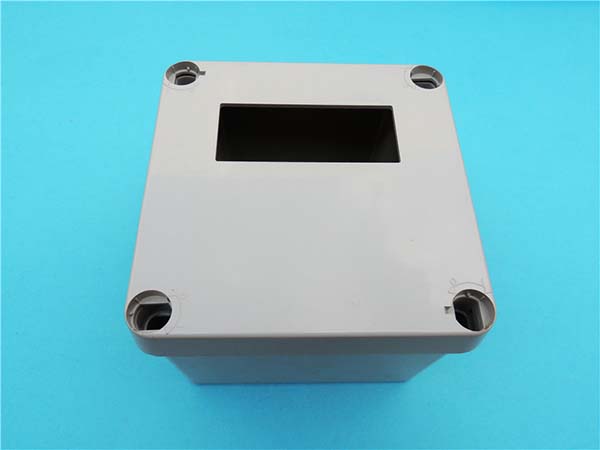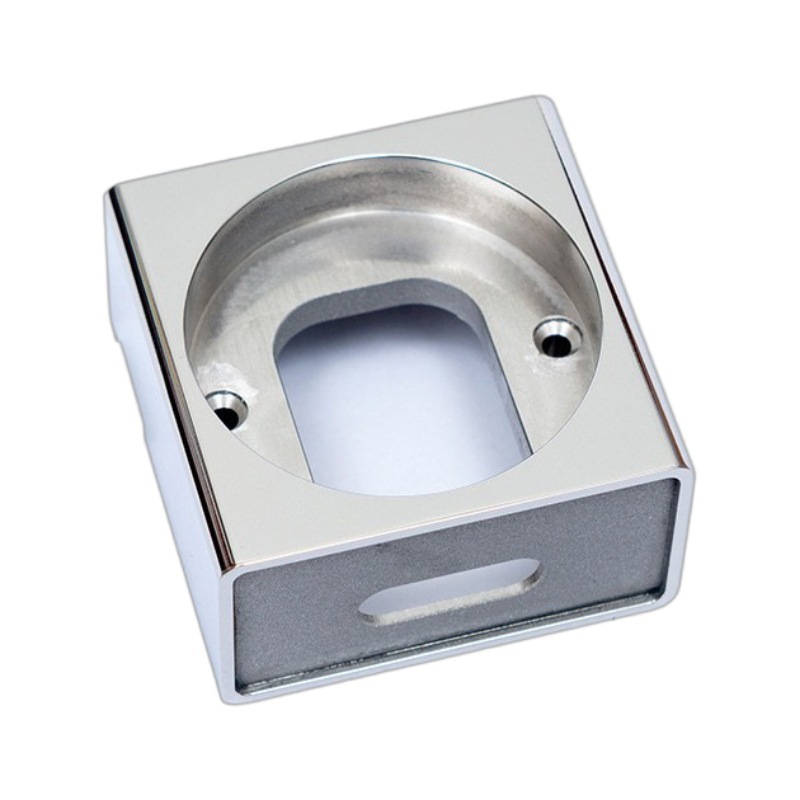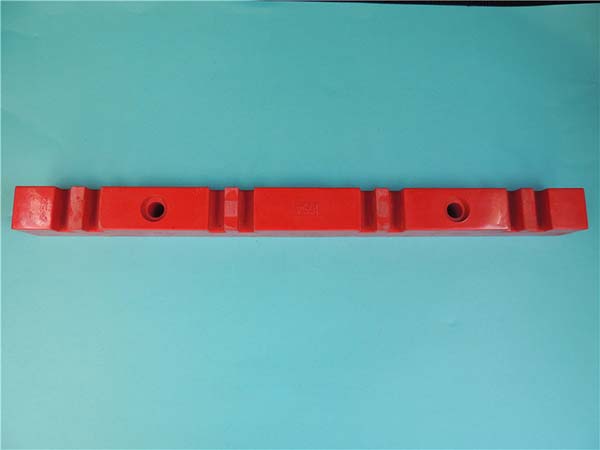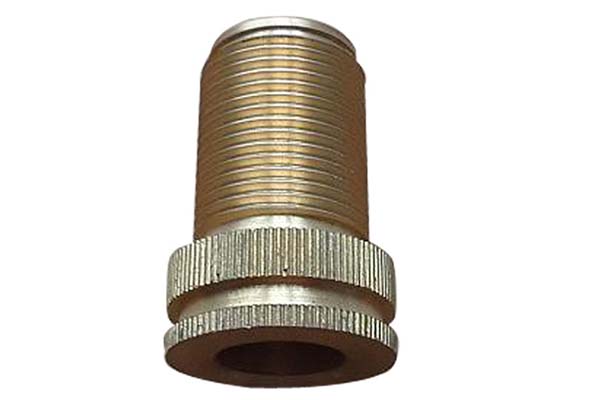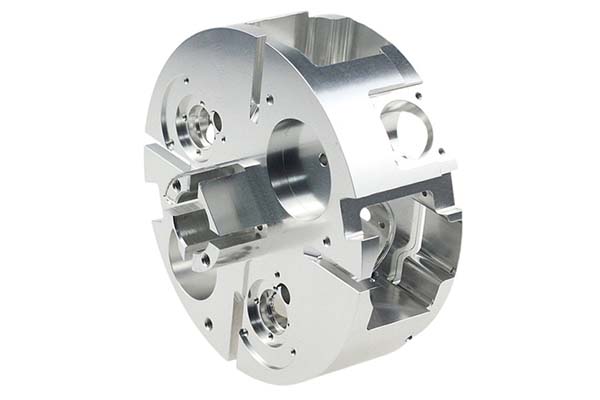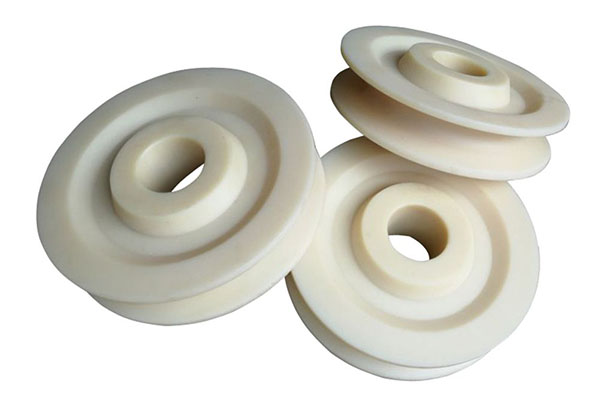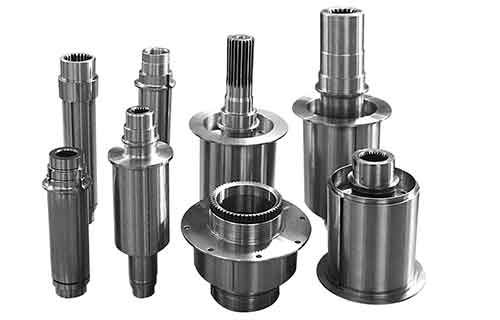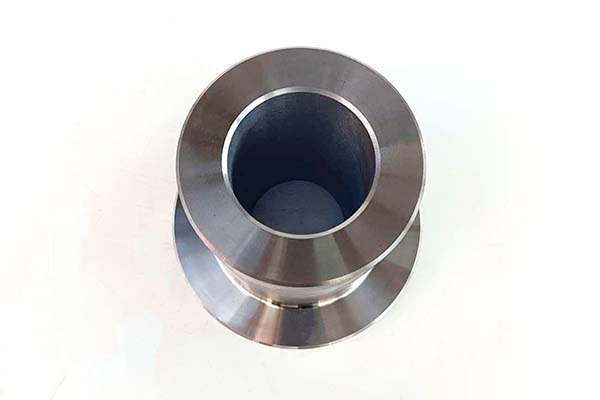CNC machining of Nylon 15%GF (15% glass fiber reinforced nylon) presents a unique set of challenges, even for experienced manufacturers. Its lower glass fiber content compared to higher-grade reinforced nylons means it balances machinability and strength, but it still requires careful tooling to avoid premature wear. Additionally, its increased toughness can lead to surface fuzzing if cutting parameters are not optimized, and its moderate moisture absorption demands controlled conditions to maintain dimensional accuracy. This guide addresses these pain points, offering expert strategies to master Nylon 15%GF machining.
Material Characteristics
Nylon 15% GF Composition combines a polymer matrix of nylon resin with 15% glass fiber reinforcement, creating a material that enhances key properties without sacrificing too much of nylon’s natural machinability. Its tensile strength ranges from 75-90 MPa, significantly higher than unfilled nylon (45-60 MPa) but lower than Nylon 20%GF, making it ideal for light-to-medium load applications.
One of its standout properties is elongation at break (8-12%), higher than higher fiber grades, which means it can withstand more deformation before failure—advantageous for parts subject to occasional overloading. Impact resistance is strong at 20-25 kJ/m², reducing the risk of cracking during machining or assembly compared to Nylon 20%GF or 30%GF.
Heat Deflection Temperature (HDT) under 1.82 MPa load is 120-130°C, suitable for applications like under-hood automotive components or industrial machinery operating in moderate heat. Moisture absorption is 1.2-1.8%, higher than Nylon 20%GF but lower than unfilled nylon, requiring controlled storage before machining to maintain precision.
Its electrical insulation properties remain excellent, with a volume resistivity of 10¹³-10¹⁴ Ω·cm, making it suitable for electrical components where strength is also needed. The material’s balance of rigidity and toughness makes it a versatile choice for diverse industries.
| Property | Nylon 15%GF | Nylon 20%GF | Unfilled Nylon PA6 |
| Tensile Strength | 75-90 MPa | 90-110 MPa | 45-60 MPa |
| Impact Resistance | 20-25 kJ/m² | 15-20 kJ/m² | 30-40 kJ/m² |
| Moisture Absorption | 1.2-1.8% | 1-1.5% | 2-3% |
| Heat Deflection Temp | 120-130°C | 110-130°C | 80-90°C |
Machining Techniques
CNC Milling Operations for Nylon 15%GF are highly effective, with 3-axis mills handling most geometries and 5-axis mills reserved for complex contours. The material’s moderate reinforcement allows for faster feed rates (0.15-0.2 mm/tooth) than higher fiber grades, reducing cycle times while maintaining surface quality.
Turning Processes benefit from the material’s toughness, with consistent depth of cut (1-2 mm for roughing, 0.1-0.3 mm for finishing) producing smooth cylindrical surfaces. Drilling and boring require sharp tools to prevent fiber pull-out, with stepover rates of 50-60% of tool diameter balancing material removal and surface finish in milling operations.
Thread milling is more efficient than tapping for Nylon 15%GF, as it reduces the risk of thread tearing due to the material’s toughness. Grooving and parting require sharp, rigid tools to avoid burring, with coolant directed at the cutting zone to reduce heat buildup.
Coolant systems using water-soluble coolant (5-7% concentration) are recommended to flush away glass fiber chips and reduce tool wear, though air cooling can suffice for low-volume jobs. Optimized toolpaths that minimize tool retractions and maintain consistent cutting speeds help prevent surface defects like fuzzing or chipping.
Tooling Considerations
Selecting the right tools for Nylon 15%GF is critical to balancing performance and cost, given its moderate abrasiveness:
- Cutting tools for Nylon 15% GF include both carbide and high-speed steel (HSS) options, though carbide is preferred for high-volume production. Carbide tools (grade K30) offer 20-30% longer life than HSS, though HSS works well for low-volume, low-precision parts.
- Tool geometry optimization focuses on a balance between sharpness and durability. A helix angle of 30-35° for end mills improves chip evacuation without excessive cutting forces, while a 118° point angle for drills reduces thrust and prevents fiber pull-out.
- Flute design varies by operation: 2-flute end mills for better chip flow in roughing, 4-flute for finer finishes in finishing passes. Straight flutes are preferred for reaming to maintain hole roundness.
- Edge sharpness is critical—cutting edges with a radius <0.02 mm minimize fuzzing, though a slight hone (0.01 mm) prevents micro-chipping during heavy cuts.
- Tool coatings like TiN (titanium nitride) extend tool life expectancy by 15-20% compared to uncoated tools, reducing friction and heat buildup. TiAlN coatings offer even better performance for high-speed operations.
- Tool breakage prevention involves avoiding excessive feed rates (over 0.2 mm/tooth) and ensuring rigid tool holders to minimize vibration, which can cause premature failure.
- Insert selection for turning operations favors negative rake inserts with polished surfaces to reduce material adhesion and improve chip flow.
Quality Control
Maintaining quality in Nylon 15%GF machining requires rigorous controls to ensure precision and consistency:
- Surface finish standards typically target Ra 0.8-1.2 μm, achievable with proper tooling and parameters. Higher finishes (Ra 0.4-0.6 μm) are possible with fine finishing passes but may require additional polishing.
- Dimensional accuracy of ±0.01 mm is achievable, though post-machining moisture absorption can cause minor changes (<0.5%), so parts are often conditioned in 50% humidity environments before final inspection.
- Tolerance levels of ±0.005 mm are possible for critical features, using tight process controls and in-process measurement.
- Inspection methods include coordinate measuring machines (CMMs) for complex geometries, micrometers for linear dimensions, and surface profilometers to verify roughness.
- Quality assurance protocols involve first-article inspection, in-process checks every 50 parts, and final inspection of all critical features to ensure compliance with specifications.
- Material testing for incoming stock verifies fiber content and mechanical properties, ensuring consistency across production runs.
- Defect identification focuses on common issues like fiber pull-out (caused by dull tools), fuzzing (excessive feed rates), and dimensional variation (inconsistent moisture levels).
- Repeatability and reproducibility (R&R) studies confirm that processes are stable, with measurement variation under 10% of total tolerance.
- First Article Inspection (FAI) is performed for new part numbers, documenting compliance with all design requirements before full production.
Industry Applications
CNC machined Nylon 15%GF parts excel in applications requiring a balance of strength, toughness, and machinability:
- Automotive parts: Interior trim components, door lock mechanisms, and sensor housings leverage its strength and moderate heat resistance.
- Aerospace components: Lightweight structural parts and cabin interior components benefit from its strength-to-weight ratio and electrical insulation.
- Electrical and electronic devices: Connector housings, terminal blocks, and switch components use its insulation properties and dimensional stability.
- Consumer product manufacturing: Power tool handles, appliance knobs, and sporting goods leverage its impact resistance and aesthetic potential.
- Medical devices: Non-implantable components like instrument housings use its chemical resistance and ease of sterilization.
- Industrial machinery: Guides, rollers, and wear pads withstand moderate friction and occasional impact in manufacturing equipment.
- Prototyping and rapid manufacturing: Its machinability makes it ideal for functional prototypes, allowing quick design iterations before production.
- Custom machined components: Low-to-medium volume parts requiring a balance of cost, performance, and lead time benefit from its predictable machining behavior.
Yigu Technology's Perspective
Yigu Technology specializes in CNC machining Nylon 15%GF, leveraging its balanced properties to deliver high-quality parts across industries. We use a combination of TiN-coated carbide tools for high-volume runs and HSS tools for low-volume projects, optimizing toolpaths to minimize fuzzing and maximize efficiency. Our quality control protocols include moisture conditioning before machining and in-process inspections to ensure dimensional accuracy. Whether producing automotive components or custom electronics parts, we tailor our approach to Nylon 15%GF’s unique characteristics, delivering reliable, precision-machined parts that meet our clients’ exact specifications.
FAQ
- How does Nylon 15%GF compare to Nylon 20%GF in machining?
Nylon 15%GF is more machinable than Nylon 20%GF, allowing higher feed rates and longer tool life due to lower abrasiveness. It also has higher elongation at break, reducing the risk of cracking, though it offers slightly lower tensile strength.
- Can Nylon 15%GF be machined without coolant?
While coolant is recommended for high-volume production to extend tool life and improve surface finish, air cooling can suffice for low-volume jobs. However, dry machining may increase fuzzing and tool wear, so parameters should be adjusted (slower feed rates) to compensate.
- What causes moisture-related dimensional changes in Nylon 15%GF, and how to prevent them?
Moisture absorption swells the material, causing dimensional changes. Preventing this involves storing material in controlled humidity (50%) before machining, conditioning finished parts in the same environment, and sealing parts if they’ll be used in extreme humidity.
